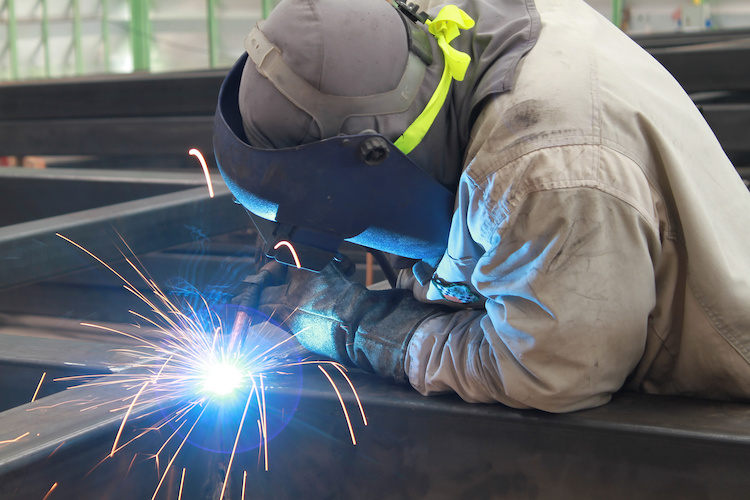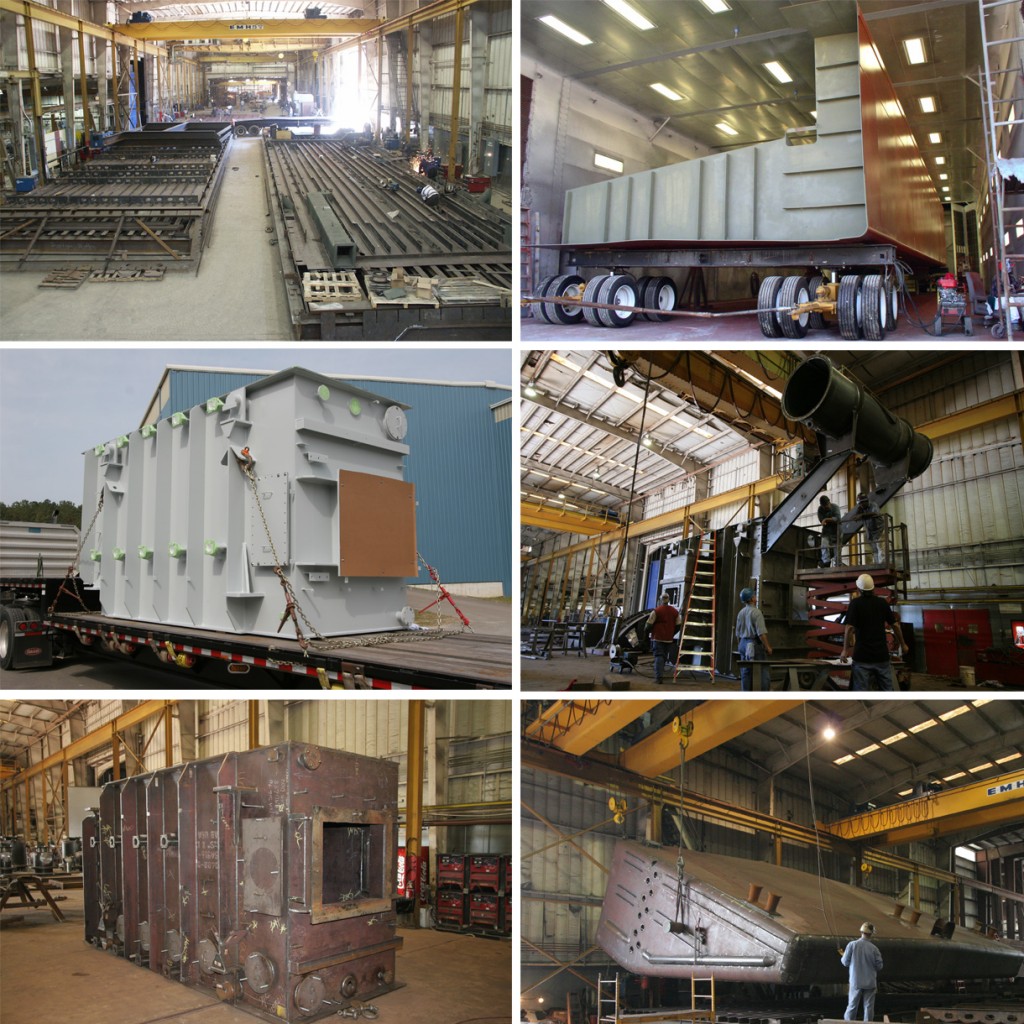Why Alpha Reo Is the Top Option for Steel Support
Why Alpha Reo Is the Top Option for Steel Support
Blog Article
Comprehensive Analysis of Cutting-Edge Techniques in Steel Manufacture Industry
As the steel fabrication market continues to advance, the combination of advanced strategies has come to be important for remaining competitive and fulfilling the demands of modern-day manufacturing criteria. From laser cutting innovations to the utilization of robotics and 3D printing in steel production, the landscape of construction techniques is quickly transforming. With each advancement bringing its very own set of advantages and challenges, a detailed evaluation of these methods is extremely important for companies intending to simplify their procedures, enhance accuracy, and inevitably, elevate the high quality of their steel manufacture output. In this dynamic sector where technology plays a crucial role, comprehending the subtleties of these cutting-edge techniques is not just an alternative but a necessity for those aiming to create in advance in the ever-evolving globe of steel manufacture.
Laser Reducing Improvements
In the world of steel construction, laser cutting advancements have revolutionized the precision and performance of steel shaping procedures. By utilizing the power of focused laser beam of lights, manufacturers can currently achieve unmatched degrees of precision when puncturing numerous sorts of metals. This technology enables intricate designs to be executed with minimal product wastefulness, making it a cost-effective solution for sectors needing high precision components.
One of the essential benefits of laser cutting is its capacity to manage a large range of products, consisting of stainless-steel, aluminum, and carbon steel, effortlessly. The process produces tidy, burr-free edges, removing the requirement for additional completing actions. The non-contact nature of laser reducing decreases the threat of material contamination, resulting in greater quality end items.
Furthermore, laser reducing makers can be configured to make swift, specific cuts, substantially minimizing manufacturing time contrasted to typical cutting approaches. This speed and accuracy make laser reducing especially suitable for automation environments where efficiency is paramount. As technology continues to advance, laser cutting is positioned to play a progressively important role in the steel construction sector.

CNC Machining Innovations
The advancement of CNC machining technologies has introduced a brand-new period of precision and efficiency in the steel construction sector. Computer Numerical Control (CNC) equipments have actually revolutionized steel construction by using unmatched precision and repeatability in the manufacturing process. steel fabrication melbourne. Among the essential developments in CNC machining is the combination of sophisticated software program systems that make it possible for real-time surveillance and changes, bring about boosted productivity and high quality control
Moreover, the advancement of multi-axis CNC makers has enabled the construction of complicated steel components with detailed layouts that were previously testing to generate. These makers can do a large range of machining operations, including milling, boring, turning, and grinding, all with high levels of precision.
Additionally, the unification of automation and robotics in CNC machining has streamlined production procedures, lowered preparations, and decreased the margin of mistake. This combination of advanced technologies not just improves efficiency but additionally ensures regular top quality across all fabricated steel components. In final thought, CNC machining developments remain to drive improvements in the steel fabrication sector, establishing brand-new standards for accuracy and performance.
Automated Welding Technologies
Automated welding modern technologies have revolutionized the steel construction industry, improving effectiveness and precision in the welding procedure. These advanced modern technologies use computer-controlled systems to automate the welding procedure, resulting in greater productivity degrees and improved weld high quality. One of the essential benefits of automated welding is the ability to execute intricate welds with regular precision, minimizing the likelihood of mistakes and revamp.
Robotic welding systems go to the center of automated welding innovations, providing unparalleled rate and accuracy. These systems can manage a large range of welding jobs, from simple to detailed, with ease (steel fabrication melbourne). By making use of innovative sensors and software application, robotic welders can adapt to variations in material and joint geometry, making certain an uniform and dependable weld
In addition, automated welding innovations boost workplace safety by lessening the direct exposure of human welders to unsafe fumes and intense heat. As the steel fabrication industry remains to progress, including automated welding modern technologies will be important for business seeking to remain affordable and meet the growing demands for top notch bonded items.
Robotics Assimilation in Manufacture
Making use of robot systems in construction processes has become a pivotal strategy for enhancing effectiveness and accuracy in modern manufacturing environments. Robotics combination in steel manufacture uses a myriad of advantages, including enhanced productivity, boosted top quality control, and boosted safety procedures. These sophisticated robotic systems are equipped with sophisticated sensors and programs capabilities, permitting them to execute detailed tasks with a high level of precision and repeatability.
One of the key benefits of robotics combination in steel construction is the capability to automate repetitive jobs, such as product handling, reducing, welding, and setting up processes. This not only accelerates production cycles but additionally minimizes the threat of human error, bring about greater overall item high quality. Additionally, robotics can operate 24/7, significantly increasing production result and meeting limited project target dates.

3D Printing in Steel Manufacturing
Having actually changed the steel fabrication market via robotics assimilation, the blossoming expedition of 3D printing in steel production is poised to more breakthrough the realm of modern manufacturing techniques. 3D printing, also referred to as additive production, supplies unprecedented style freedom and complexity, enabling the development of elaborate steel structures that were formerly unattainable via typical manufacturing approaches. By using computer-aided design (CAD) software application, makers can specifically regulate the layer-by-layer deposition of steel product, causing get rid of enhanced performances and geometries.
Among the vital benefits of 3D printing in steel production is its capability to lower product waste dramatically. Unlike subtractive production processes where excess Extra resources material is cut away, 3D printing only utilizes the required amount of steel required for the last component. This performance not just causes cost savings but additionally straightens with lasting manufacturing methods by reducing environmental influence.
In addition, 3D printing enables quick prototyping and modification, enabling the manufacturing of little sets of intricate steel elements with brief preparations. As the innovation remains to grow and come to be a lot more available, its view integration into mainstream steel fabrication procedures is expected to drive innovation and performance across the sector.
Conclusion
Finally, the steel fabrication market has seen considerable innovations in strategies such as laser cutting, CNC machining, automated welding, robotics integration, and 3D printing. These cutting-edge technologies have transformed the means steel products are made, causing boosted accuracy, cost-effectiveness, and effectiveness. Continued financial investment in these cutting-edge strategies is critical for the sector to remain competitive and satisfy the demands of modern-day production procedures.
As the steel manufacture sector proceeds to develop, the integration of cutting-edge techniques has actually ended up being essential for staying affordable and satisfying the demands of modern-day production requirements.One of the key benefits of laser cutting is its capability to deal with a wide variety of materials, including stainless steel, aluminum, and carbon steel, with ease.Automated welding innovations have actually changed the steel fabrication market, improving efficiency and accuracy in the welding process.Having transformed the steel fabrication industry through robotics assimilation, the expanding expedition of 3D printing in steel manufacturing is poised to more breakthrough the realm of contemporary production methods.In conclusion, the steel fabrication industry has seen considerable advancements in techniques such as laser cutting, CNC machining, automated welding, robotics combination, and 3D printing.
Report this page